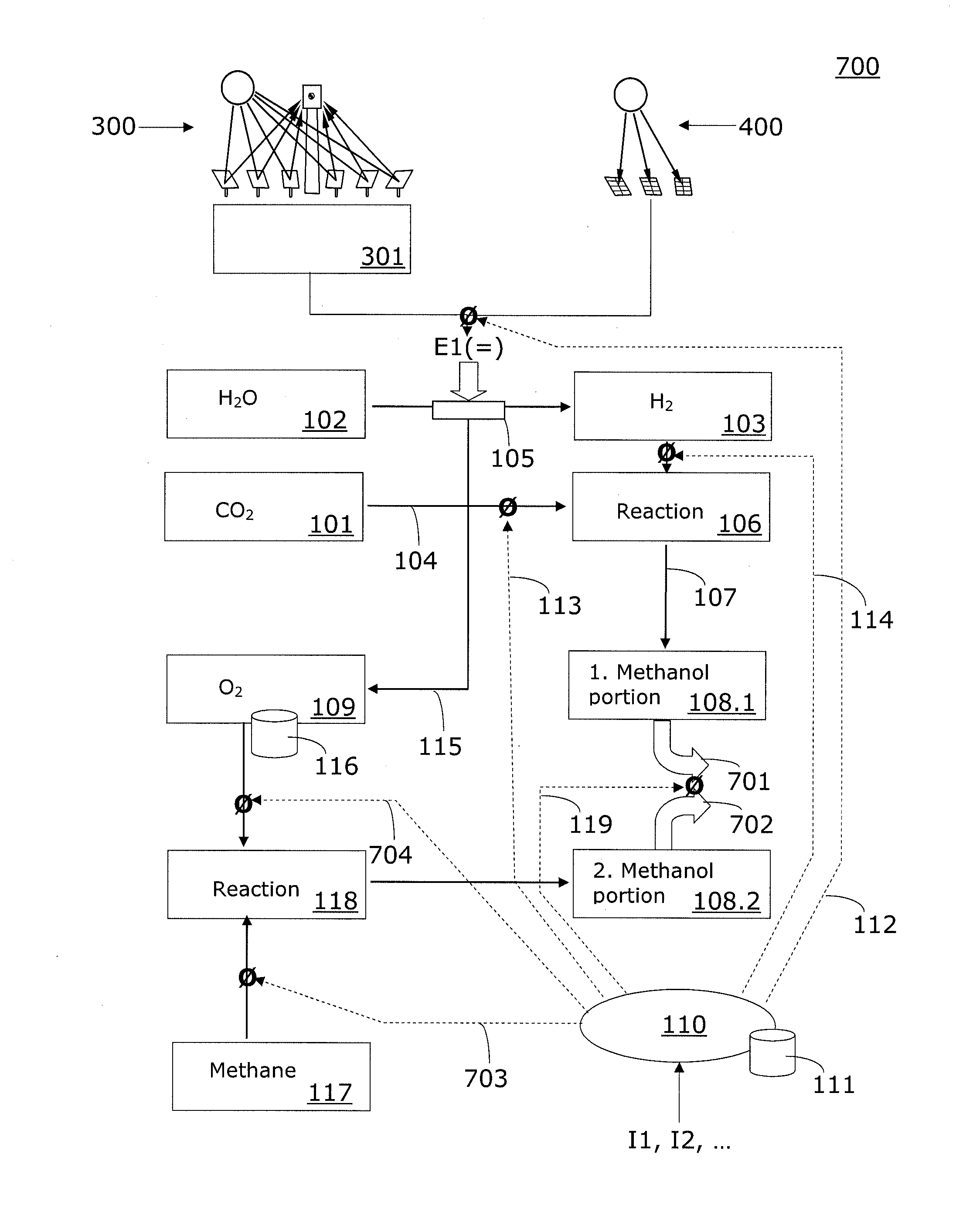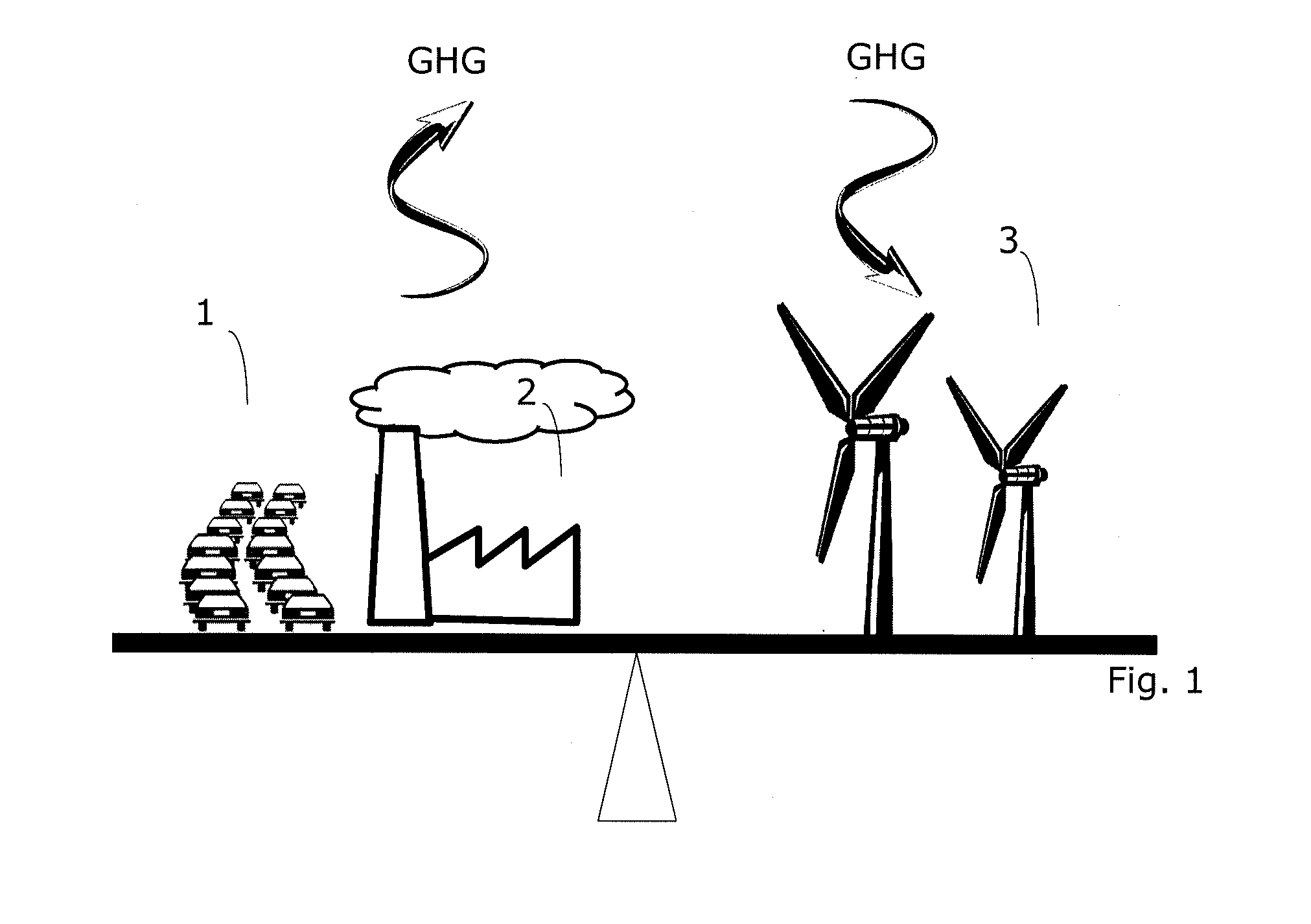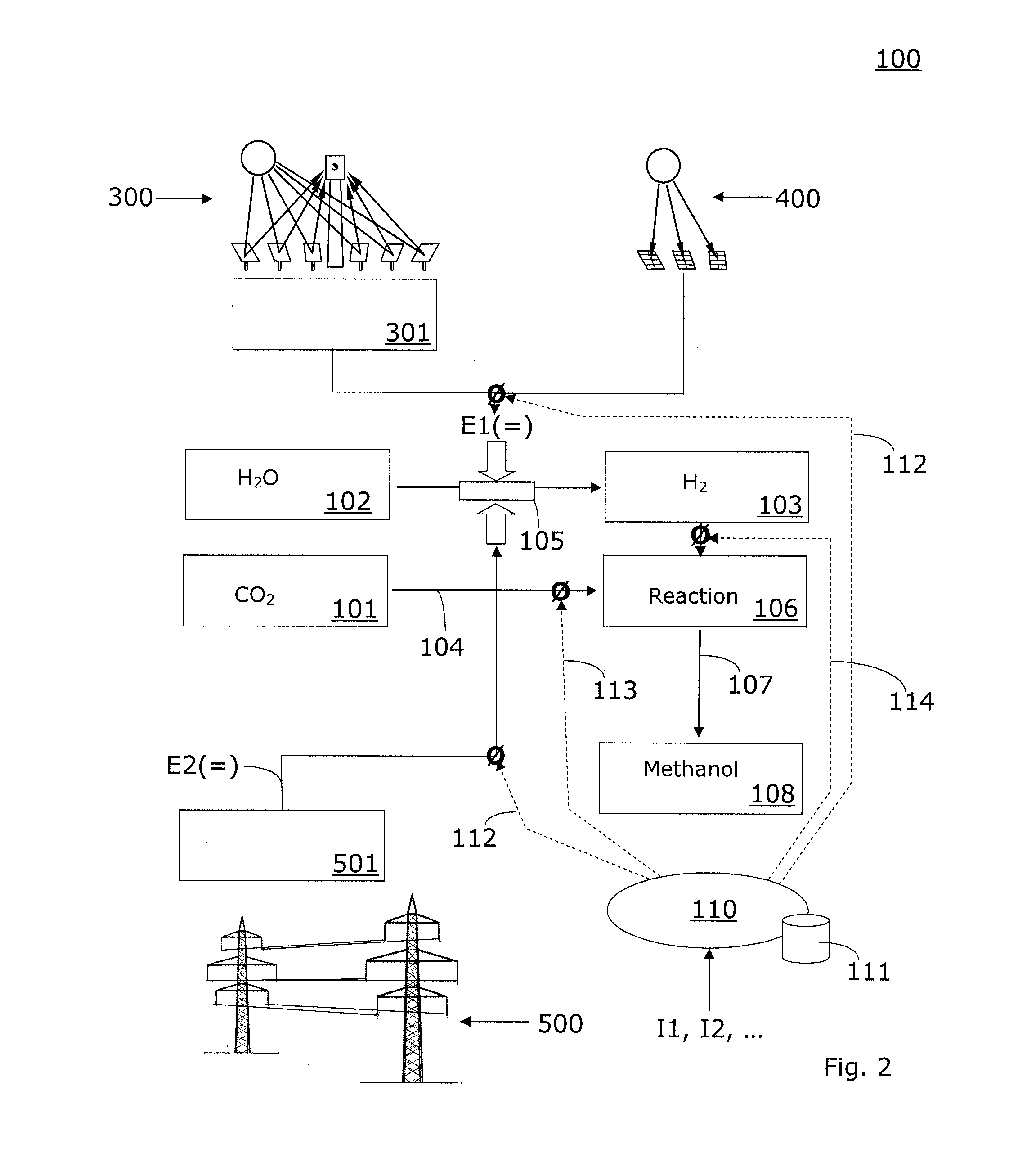Method and system for providing a hydrocarbon-based energy carrier using a portion of renewably produced methanol and a portion of methanol that is produced by means of direct oxidation, partial oxidation, or reforming
a technology of energy carrier and hydrogen-based fuel, which is applied in the field of providing storable and transportable carbon-based energy carriers, can solve the problems of system operation according to the requirements of an integrated electric network that is extraordinarily difficult, and the power generation costs of wind or solar power plants are thus additionally substantially burdened. , to achieve the effect of reducing the worldwide emission of co2
- Summary
- Abstract
- Description
- Claims
- Application Information
AI Technical Summary
Benefits of technology
Problems solved by technology
Method used
Image
Examples
Embodiment Construction
[0039]The method according to the invention is based on a novel concept, which, employing existing starting materials, provides so-called reaction products, which are either usable directly as energy carriers or are usable indirectly as energy carriers, i.e., after the execution of further steps.
[0040]The term energy carrier is used here for materials which can be used directly either as a fuel or combustible. Specifically, as shown in FIGS. 2-3, this relates to methanol 108, 108.1, 108.2.
[0041]The transportability of the energy carrier is characterized here by the chemical reaction potential.
[0042]In the case of methanol 108.1, 108.2 as the energy carrier, certain boundary conditions are to be maintained during storage and during transport, which are similar to the conditions for handling other fossil liquid fuels and combustibles. The existing infrastructure can be used without problems here. On the material side, certain adaptations may be necessary in order to take the corrosive...
PUM
| Property | Measurement | Unit |
|---|---|---|
| Power | aaaaa | aaaaa |
| Energy | aaaaa | aaaaa |
Abstract
Description
Claims
Application Information
 Login to View More
Login to View More - R&D
- Intellectual Property
- Life Sciences
- Materials
- Tech Scout
- Unparalleled Data Quality
- Higher Quality Content
- 60% Fewer Hallucinations
Browse by: Latest US Patents, China's latest patents, Technical Efficacy Thesaurus, Application Domain, Technology Topic, Popular Technical Reports.
© 2025 PatSnap. All rights reserved.Legal|Privacy policy|Modern Slavery Act Transparency Statement|Sitemap|About US| Contact US: help@patsnap.com



